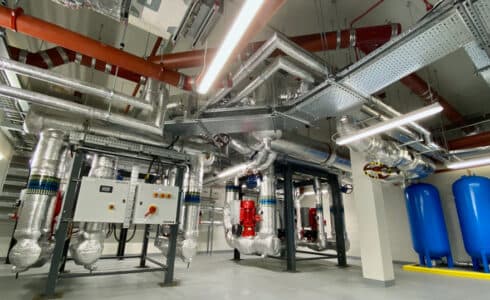Identifying Your Industry Needs
Pharmaceuticals and Biotechnology
In the pharmaceutical and biotechnology sectors, maintaining a contaminant-free environment is crucial. These industries often deal with sensitive materials and live cells, requiring cleanrooms classified as ISO 5 or ISO 8. The right cleanroom helps prevent contaminant leakage, ensuring product safety and efficacy.
Electronics and Semiconductor
For the electronics and semiconductor industries, even the smallest particles can cause significant defects. Cleanrooms in these fields must be highly controlled to avoid contamination that can lead to product failures. Typically, these cleanrooms are classified between ISO 1 and ISO 5, depending on the specific requirements of the manufacturing process.
Aerospace and Defence
The aerospace and defence sectors require cleanrooms to ensure the reliability and safety of their products. Contaminants can compromise the performance of critical components. Cleanrooms in these industries are often classified as ISO 7 or ISO 8, providing a controlled environment to maintain high standards of quality and precision.
Choosing the right cleanroom for your industry is essential to maintain product integrity and meet regulatory standards.
Key Factors in Cleanroom Design
Designing a cleanroom involves several critical elements to ensure it meets industry standards and functions effectively. Understanding these key components can help you create a cleanroom that is both efficient and compliant with regulations.
Ventilation Systems
A proper ventilation system is essential for maintaining air quality in a cleanroom. This includes the use of HEPA filtration to remove contaminants from the air. The system should be designed to provide a consistent flow of clean air, which helps in reducing the risk of contamination.
Air Pressure Control
Controlling air pressure is crucial for preventing contaminants from entering the cleanroom. Positive pressure systems are often used to keep unfiltered air out. This involves maintaining a higher pressure inside the cleanroom compared to adjacent areas.
Modular vs. Traditional Construction
When it comes to building a cleanroom, you have two main options: modular and traditional construction. Modular cleanrooms offer flexibility and can be easily expanded or reconfigured. Traditional construction, on the other hand, is more permanent but can be customised to meet specific needs.
Identifying weak points in advance can ensure your cleanroom is fully functional from day one of operation.
Here are some key components of cleanroom design:
- Airtight enclosure
- HEPA filtration
- Positive pressure system
- HVAC systems
- Cleanroom furniture and fixtures
- Cleanroom walls and floors
Regulatory Considerations
When choosing a cleanroom, the first thing to think about is the rules mandated by government regulations, ISO guidelines, or customer requirements. For instance, government regulation USP797 outlines specific requirements for making pharmaceutical products. Similarly, ISO 14644-5:2004 guidelines specify basic requirements for cleanroom operations. Often, these regulations or customer specifications will dictate the cleanliness level or rating required, which provides a good starting point for choosing the right cleanroom.
Government Regulations
Government agencies like the FDA, NSF, and DOD have specific rules that certain products must be made in cleanrooms that meet their standards. For example, USP797 compounding must be done in an ISO7 cleanroom. These regulations ensure that products meet sterility, cleanliness, or quality requirements.
Industry Guidelines
ISO requirements cover a wide range of contamination control and risk-reducing strategies, including:
- Health and safety requirements
- Compatibility with cleaning agents and techniques
- Cleanability
- Biocontamination
- Specific requirements of equipment and materials for processes and products
- Design details of equipment
Customer Specifications
Sometimes, customer needs will dictate the classification of the cleanroom your product must be made in. This ensures you meet their sterility, cleanliness, or quality requirements. Understanding these needs is crucial for maintaining good customer relationships and ensuring product quality. Determining the appropriate cleanroom classification is paramount. This helps in meeting all regulatory and customer requirements effectively.



